We enjoyed an informative and mouth-watering food tour yesterday, exploring the flavors of Rome’s Campo de’ Fiori, the Jewish Ghetto, and our very own neighborhood Trastevere.
We haven’t been to the Italian capital in eight years, so a food tour was a perfect reintroduction to local cuisine and some great spots to eat and drink. But what made this one by Gourmetaly extra special was the added dive into the history and culture of each neighborhood. Over four hours, we sampled classic Roman foods and dishes in three of the city’s oldest and most famous destinations.
Our guide, Benedettia, met us at Campo de’ Fiori, just across a walking bridge from Trastevere where we’re staying. The name means “field of flowers,” and centuries ago, this bustling square was just that—a meadow. By the 15th century, it transformed into the lively daily marketplace it is today, filled with vibrant produce and mouth-watering aromas from nearby bakeries and restaurants.
But Campo de’ Fiori holds a much darker history too. This same square was once the site of public executions, the most famous being that of Giordano Bruno, a philosopher burned at the stake in 1600 for challenging the Church’s ideas about the universe. Every February 17th, people gather at his brooding statue here to honor his courage and celebrate intellectual freedom.
We made two delicious food stops in the square. At Ruggeri, we indulged in tasting quintessential cheeses and meats, along with our first wine of the day. This historic deli has been a cornerstone of Roman life for over a century, known for its exceptional cured meats, cheeses, and other Italian specialties. We sampled buffalo mozzarella, creamy stracciatella, and sharp pecorino romano, paired with thin slices of flat salami and prosciutto. My personal favorite was the chunk of savory porchetta, slow-roasted pork redolent of rosemary, garlic, fennel, and black pepper.
A Roman food tour wouldn’t be complete without pizza, and we got just that at Forno Campo de’ Fiori—an absolute must-visit. This tiny historic bakery in the square since 1890 is famous for its pizza al taglio, Roman-style pizza sold by the slice. With its perfectly crisp crust and fresh, seasonal toppings, it’s no wonder Forno is a local favorite. We each tried two slices, featuring toppings unlikely to be offered in American pizza shops. One was thick with cheese and stripes of squash blossoms and anchovies, while the other was cloaked with just a simple, tangy tomato sauce. Both were absolutely delicious!
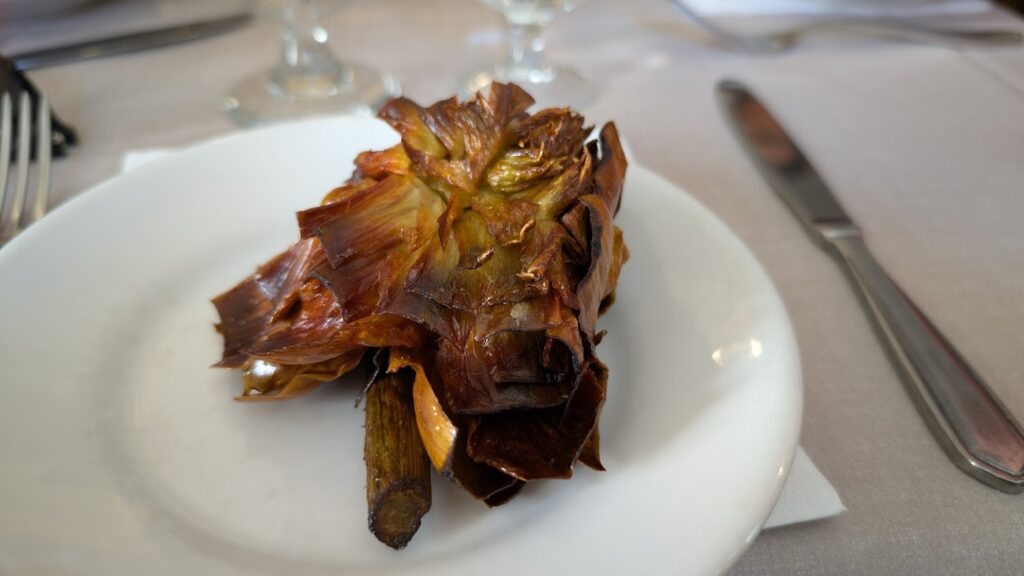
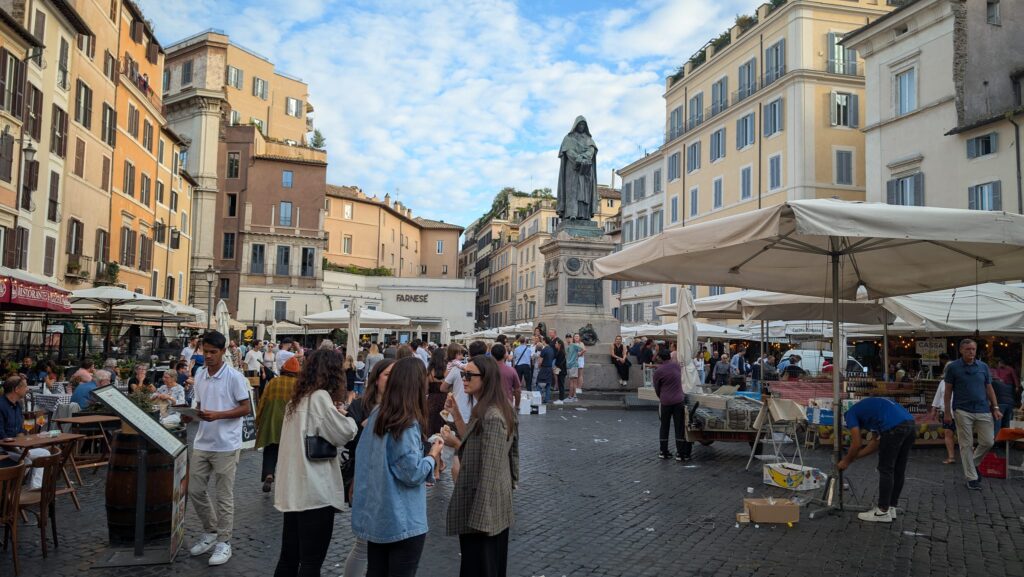
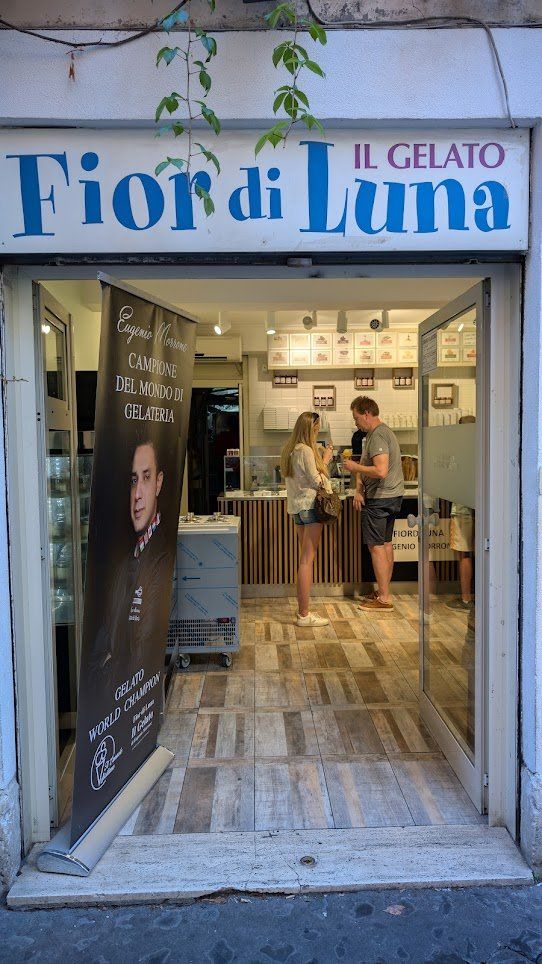
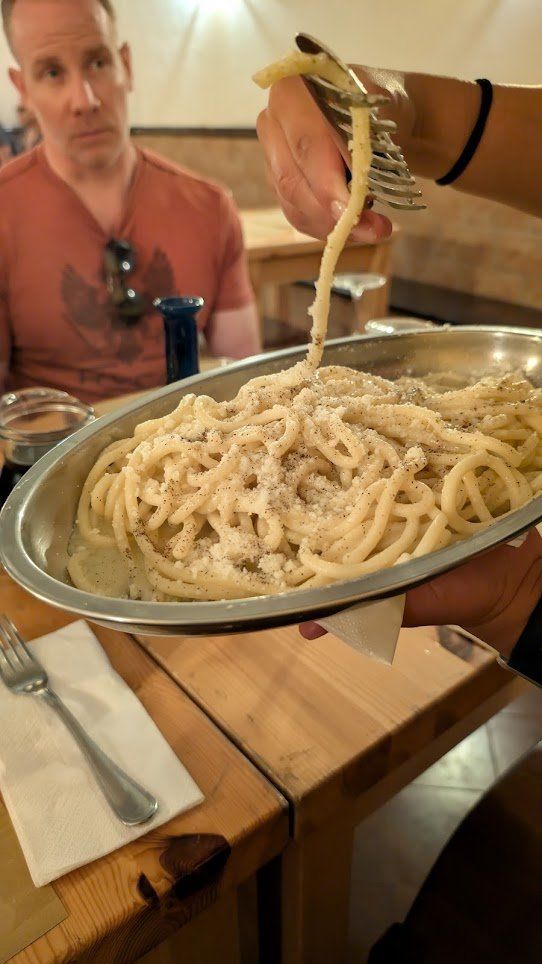
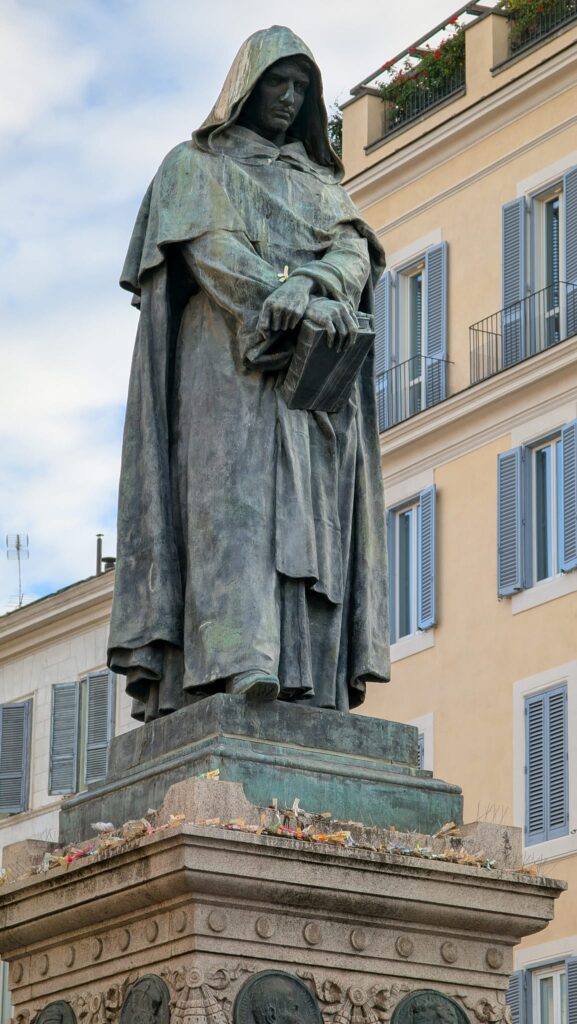
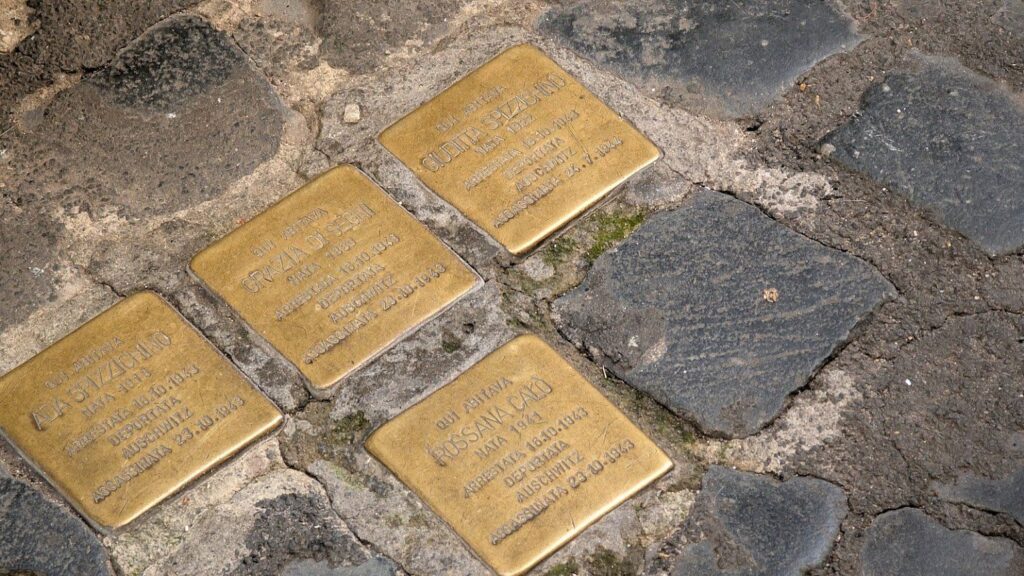
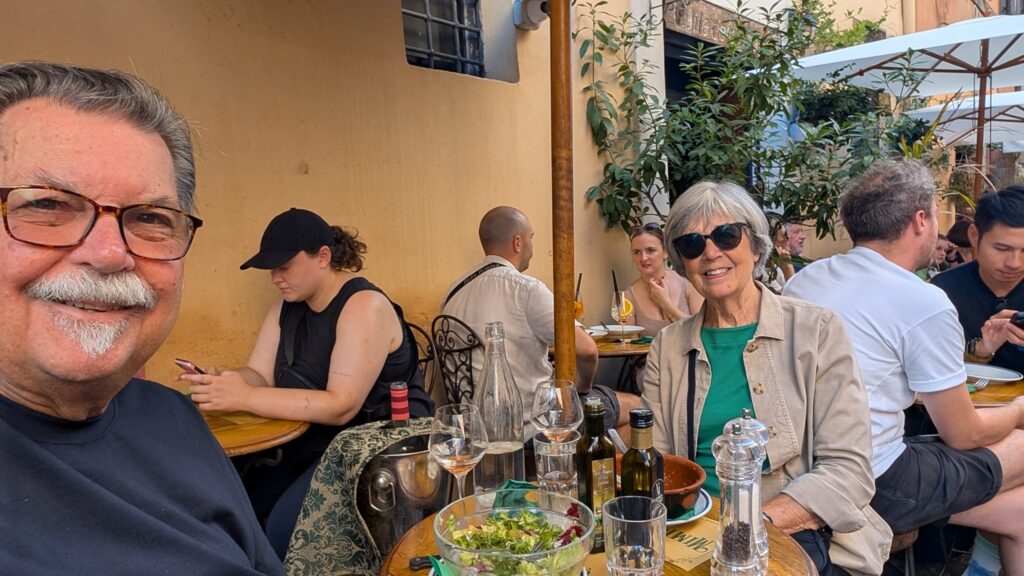
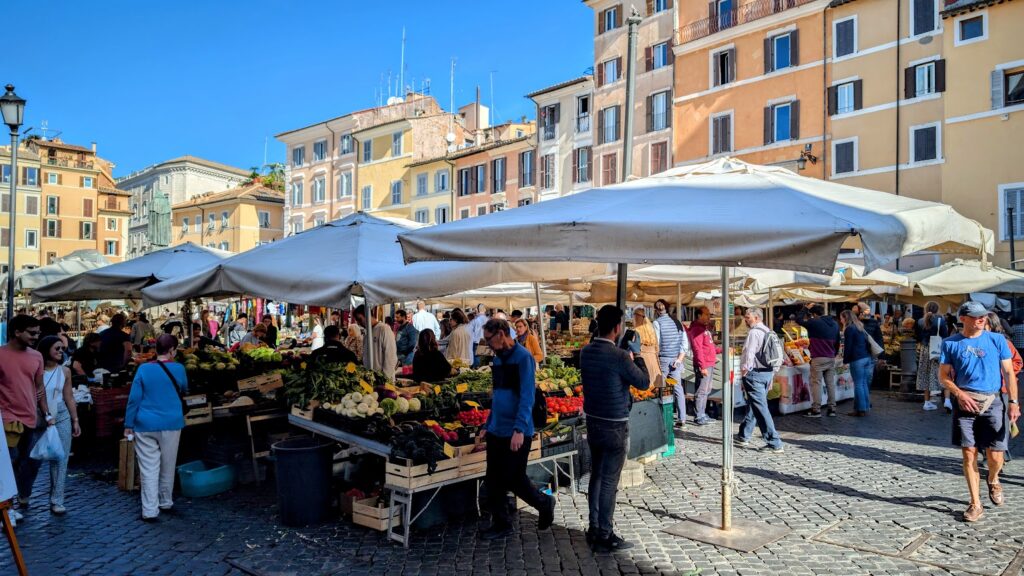
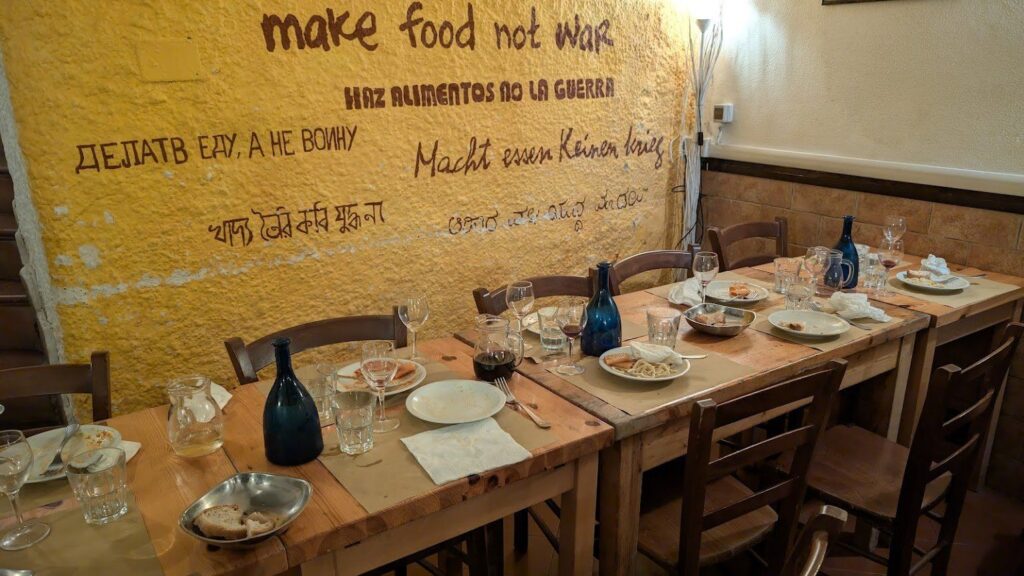
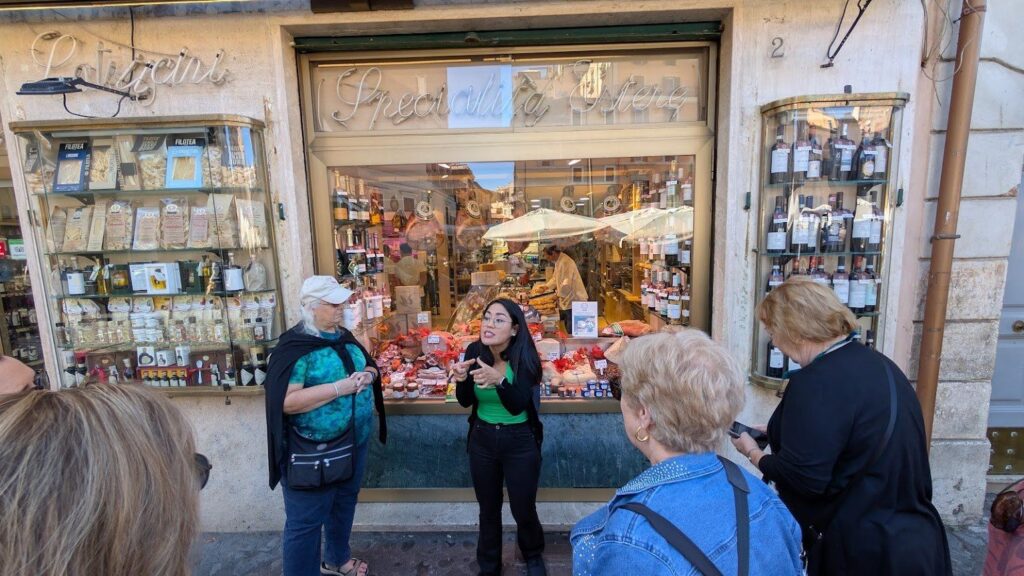

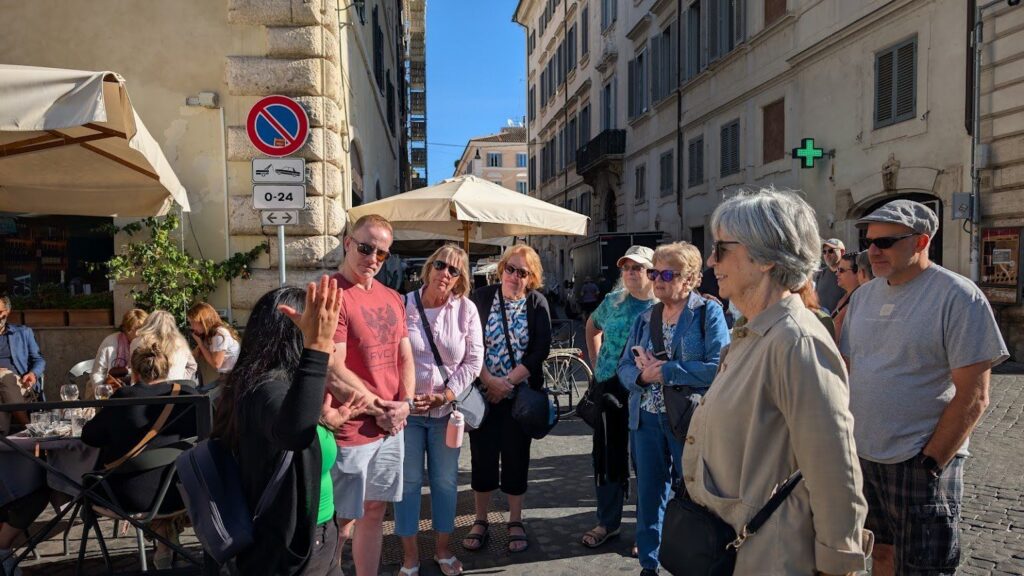

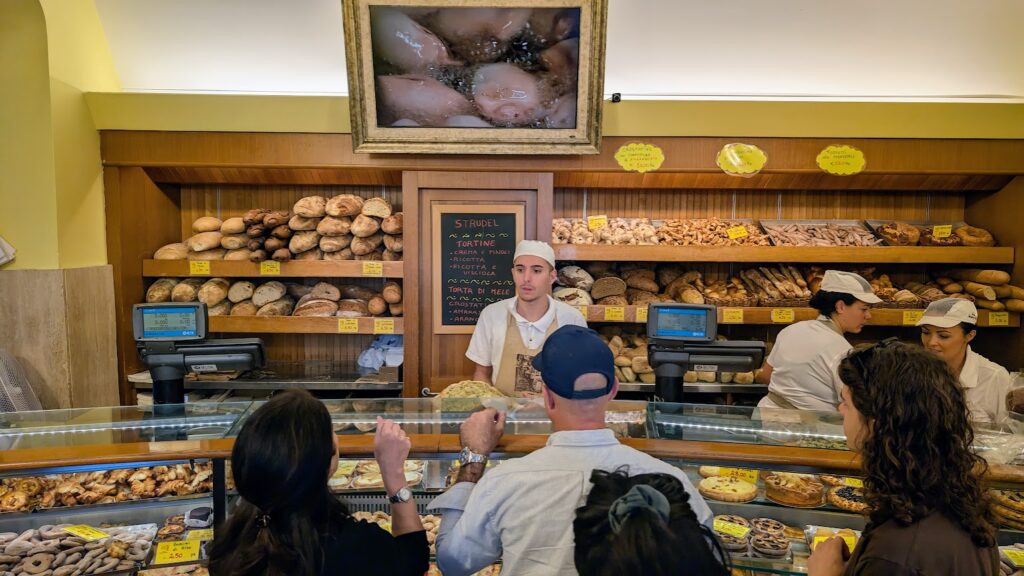

Our group wound its way through the bustling crowds and market stalls in Campo de’ Fiori, before heading toward our next destination—the Jewish Ghetto. Walking its narrow streets, quiet on the Sabbath morning, we couldn’t help but feel the weight of its turbulent history.
Established in 1555 by papal decree, Rome’s Jewish Ghetto confined the city’s Jews within its crowded streets above the Tiber. Despite this and many other adversities especially during World War II, the Jewish community endured, preserving unique traditions, language, and cuisine, which remain integral to Roman culture today.
As we walked through the Ghetto, our guide shared stories of resilience and survival. We saw brass tiles set in front of doorways, each inscribed with the names of Jewish residents who were taken during the Holocaust. They were sobering reminders of the Ghetto’s darkest times.
Our stop here was El Fantino, a modest family-run restaurant, to sample its famous carciofi alla giudia, or fried artichokes. A staple of Roman Jewish cuisine since the 16th century, these artichokes are carefully flattened and twice fried to crispy perfection. They were a chewy treat, paired with glasses of cool white wine.
A walk across a pedestrian bridge over the Tiber brought us back to Trastevere, our home for our eight days in Rome. Known for its cobblestone streets and vibrant bohemian atmosphere, Trastevere is one of the city’s most charming and authentic neighborhoods. Here, we visited Sette Oche in Altalena, a cozy trattoria known for its classic Roman dishes. The rustic atmosphere and simple yet delicious food made it a perfect choice.
We savored plates brimming with two of the five iconic Roman pastas. One was rigatoni all’amatriciana, a hearty dish made with tangy tomato sauce, crispy guanciale (Italian bacon), and sharp pecorino romano. The second was cacio e pepe with tonnarelli, a perfect example of Roman simplicity—just pecorino cheese, freshly ground black pepper, and pasta. Both dishes showcase how Roman cuisine transforms a few basic ingredients into something extraordinary.
In our remaining days here, we’ll try the other classics, named by our guide: Carbonara – eggs, guanciale, pecorino romano, and black pepper often served with spaghetti or rigatoni; Gricia – Similar to amatriciana but without tomatoes; and Aglio e Olio – Spaghetti with garlic, olive oil, and sometimes chili flakes.
To top off the tour and meal, we headed to Il Gelato Fior di Luna for a well-deserved gelato. This artisanal gelateria on one of Trastevere’s bustling streets is known for its all-natural ingredients. I chose peanut caramel and rum-rich zabaione—creamy, smooth, and absolutely delicious.
While we ate, our guide shared tips on selecting an authentic gelato shop. Look for natural colors – bright green pistachio or neon yellow banana are easily spotted giveaways. And so are mounded trays. Good gelato is stored in covered in metal cylinders.
Our tour struck a good balance of culture and cuisine, although the wines served were disappointing. We covered nearly three miles on foot, which helped burn off some of those calories. But it whetted our appetites for more delicious dishes – cravings we hope to satisfy on our remaining days in Rome.

